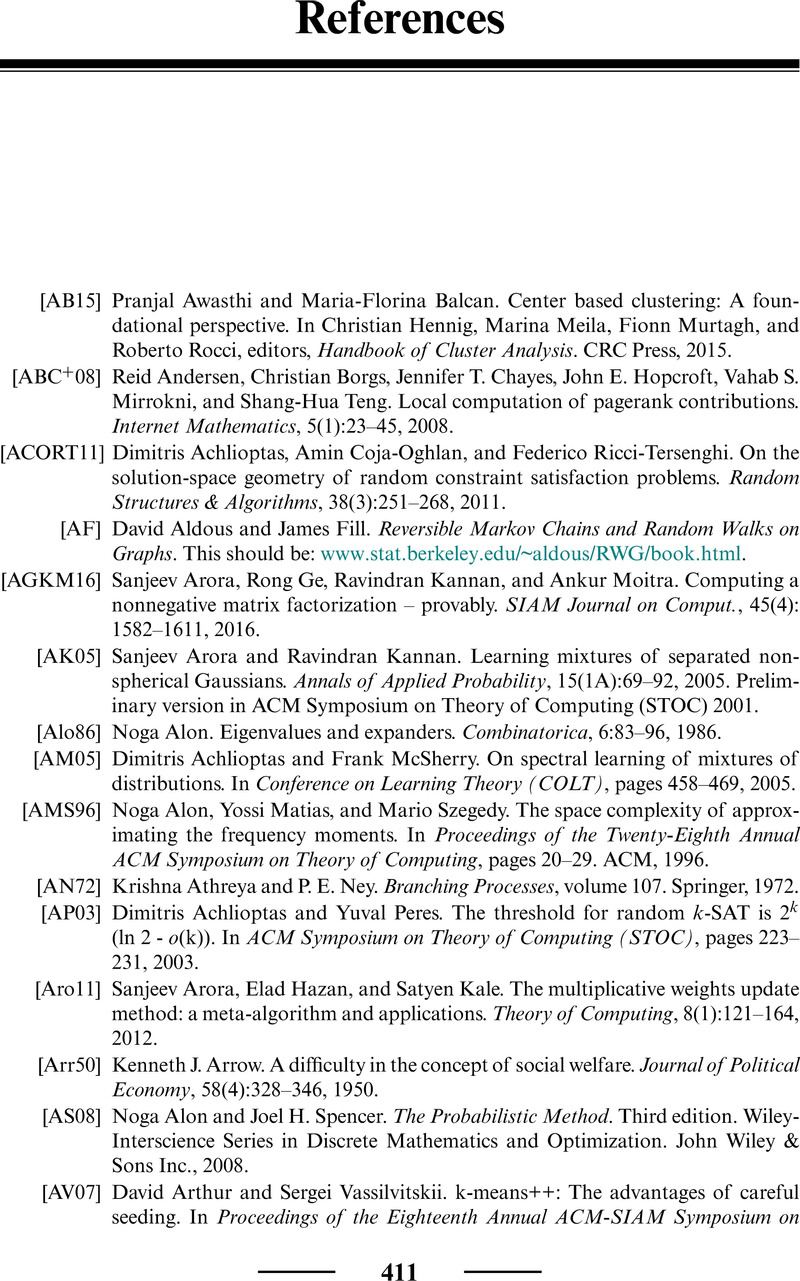Book contents
- Frontmatter
- Contents
- 1 Introduction
- 2 High-Dimensional Space
- 3 Best-Fit Subspaces and Singular Value Decomposition (SVD)
- 4 Random Walks and Markov Chains
- 5 Machine Learning
- 6 Algorithms for Massive Data Problems: Streaming, Sketching, and Sampling
- 7 Clustering
- 8 Random Graphs
- 9 Topic Models, Nonnegative Matrix Factorization, Hidden Markov Models, and Graphical Models
- 10 Other Topics
- 11 Wavelets
- 12 Background Material
- References
- Index
- References
References
Published online by Cambridge University Press: 17 January 2020
- Frontmatter
- Contents
- 1 Introduction
- 2 High-Dimensional Space
- 3 Best-Fit Subspaces and Singular Value Decomposition (SVD)
- 4 Random Walks and Markov Chains
- 5 Machine Learning
- 6 Algorithms for Massive Data Problems: Streaming, Sketching, and Sampling
- 7 Clustering
- 8 Random Graphs
- 9 Topic Models, Nonnegative Matrix Factorization, Hidden Markov Models, and Graphical Models
- 10 Other Topics
- 11 Wavelets
- 12 Background Material
- References
- Index
- References
Summary

- Type
- Chapter
- Information
- Foundations of Data Science , pp. 411 - 420Publisher: Cambridge University PressPrint publication year: 2020



